Grand Teton National Park
Grand Teton National Park is an American national park in northwestern Wyoming. At approximately 310,000 acres (480 sq mi; 130,000 ha; 1,300 km2), the park includes the major peaks of the 40-mile-long (64 km) Teton Range as well as most of the northern sections of the valley known as Jackson Hole. Grand Teton National Park is only 10 miles (16 km) south of Yellowstone National Park, to which it is connected by the National Park Service-managed John D. Rockefeller Jr. Memorial Parkway. Along with surrounding national forests, these three protected areas constitute the almost 18,000,000-acre (7,300,000 ha) Greater Yellowstone Ecosystem, one of the world's largest intact mid-latitude temperate ecosystems.
The human history of the Grand Teton region dates back at least 11,000 years, when the first nomadic hunter-gatherer Paleo-Indians began migrating into the region during warmer months pursuing food and supplies. In the early 19th century, the first white explorers encountered the eastern Shoshone natives. Between 1810 and 1840, the region attracted fur trading companies that vied for control of the lucrative beaver pelt trade. U.S. Government expeditions to the region commenced in the mid-19th century as an offshoot of exploration in Yellowstone, with the first permanent white settlers in Jackson Hole arriving in the 1880s.
Efforts to preserve the region as a national park began in the late 19th century, and in 1929 Grand Teton National Park was established, protecting the Teton Range's major peaks. The valley of Jackson Hole remained in private ownership until the 1930s, when conservationists led by John D. Rockefeller Jr. began purchasing land in Jackson Hole to be added to the existing national park. Against public opinion and with repeated Congressional efforts to repeal the measures, much of Jackson Hole was set aside for protection as Jackson Hole National Monument in 1943. The monument was abolished in 1950 and most of the monument land was added to Grand Teton National Park.
Grand Teton National Park is named for Grand Teton, the tallest mountain in the Teton Range. The naming of the mountains is attributed to early 19th-century French-speaking trappers—les trois tétons (the three teats) was later anglicized and shortened to Tetons. At 13,775 feet (4,199 m), Grand Teton abruptly rises more than 7,000 feet (2,100 m) above Jackson Hole, almost 850 feet (260 m) higher than Mount Owen, the second-highest summit in the range. The park has numerous lakes, including 15-mile-long (24 km) Jackson Lake as well as streams of varying length and the upper main stem of the Snake River. Though in a state of recession, a dozen small glaciers persist at the higher elevations near the highest peaks in the range. Some of the rocks in the park are the oldest found in any American national park and have been dated at nearly 2.7 billion years.
Grand Teton National Park is an almost pristine ecosystem and the same species of flora and fauna that have existed since prehistoric times can still be found there. More than 1,000 species of vascular plants, dozens of species of mammals, 300 species of birds, more than a dozen fish species and a few species of reptiles and amphibians inhabit the park. Due to various changes in the ecosystem, some of them human-induced, efforts have been made to provide enhanced protection to some species of native fish and the increasingly threatened whitebark pine.
Grand Teton National Park is a popular destination for mountaineering, hiking, fishing and other forms of recreation. There are more than 1,000 drive-in campsites and over 200 miles (320 km) of hiking trails that provide access to backcountry camping areas. Noted for world-renowned trout fishing, the park is one of the few places to catch Snake River fine-spotted cutthroat trout. Grand Teton has several National Park Service-run visitor centers, and privately operated concessions for motels, lodges, gas stations and marinas.
- 1 Human history
- 2 Park management
-
3
Geography
- 3.1 Teton Range
- 3.2 Jackson Hole
- 3.3 Lakes and rivers
- 3.4 Glaciation
- 4 Geology
-
5
Ecology
- 5.1 Flora
- 5.2 Fauna
- 5.3 Fire ecology
- 5.4 Air and water quality
- 6 Climate
-
7
Recreation
- 7.1 Mountaineering
- 7.2 Camping and hiking
- 7.3 Boating and fishing
- 7.4 Winter activities
-
8
Tourism
- 8.1 Visitor centers
- 8.2 Accommodations
- 9 See also
- 10 References
- 11 External links
Links
Images Gallery
-
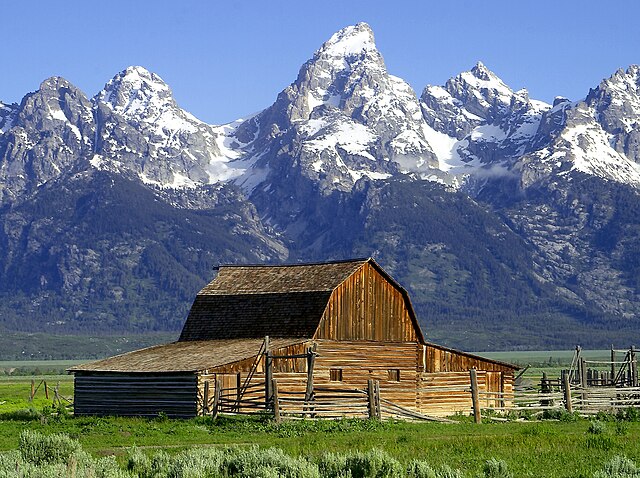
-
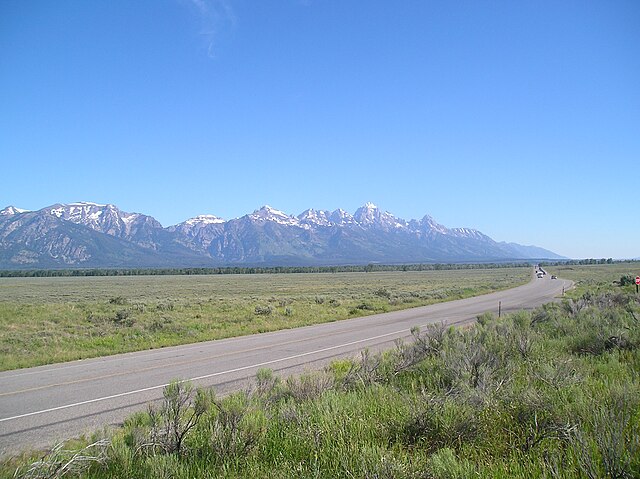
-

-
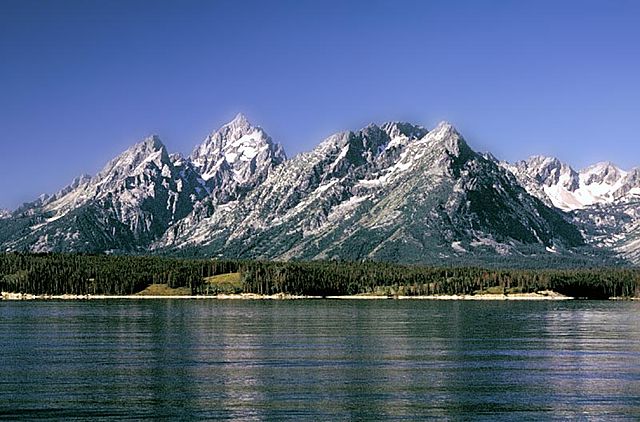
-
Bison grazing in Jackson Hole
-
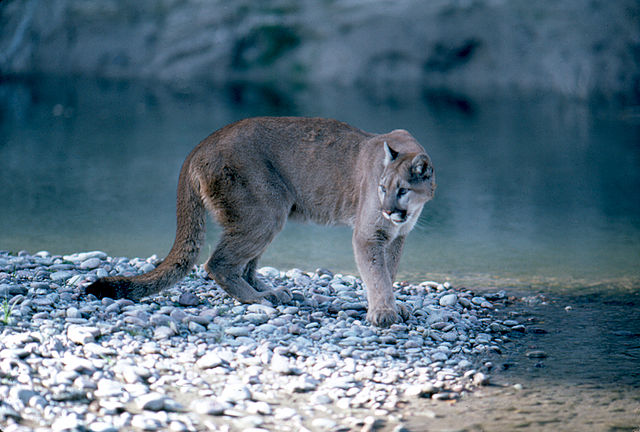 Though cougars are present in Grand Teton, they are rarely seen.
Though cougars are present in Grand Teton, they are rarely seen.
-

-
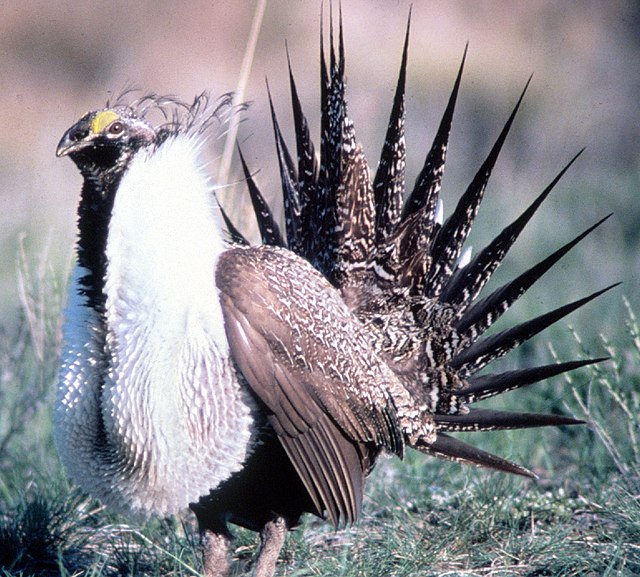
-
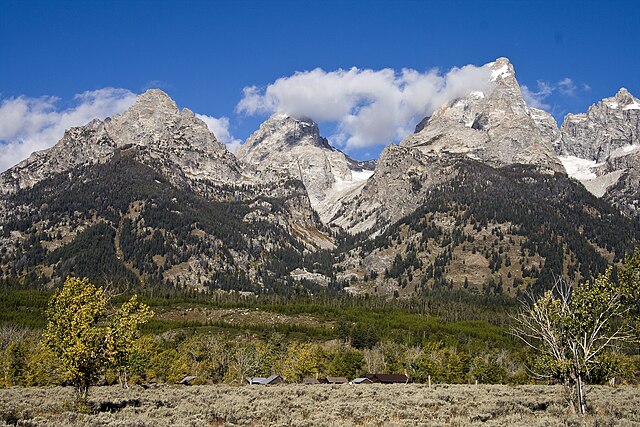
-
Moose near Leigh Lake
-
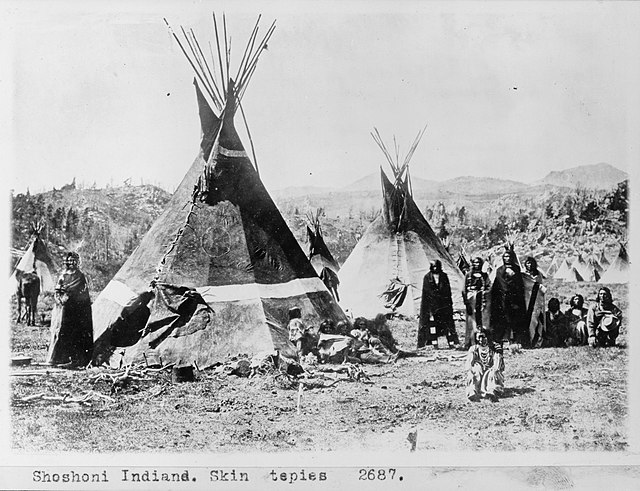 A Shoshone encampment in Wyoming, photographed by W. H. Jackson, 1870
A Shoshone encampment in Wyoming, photographed by W. H. Jackson, 1870
-
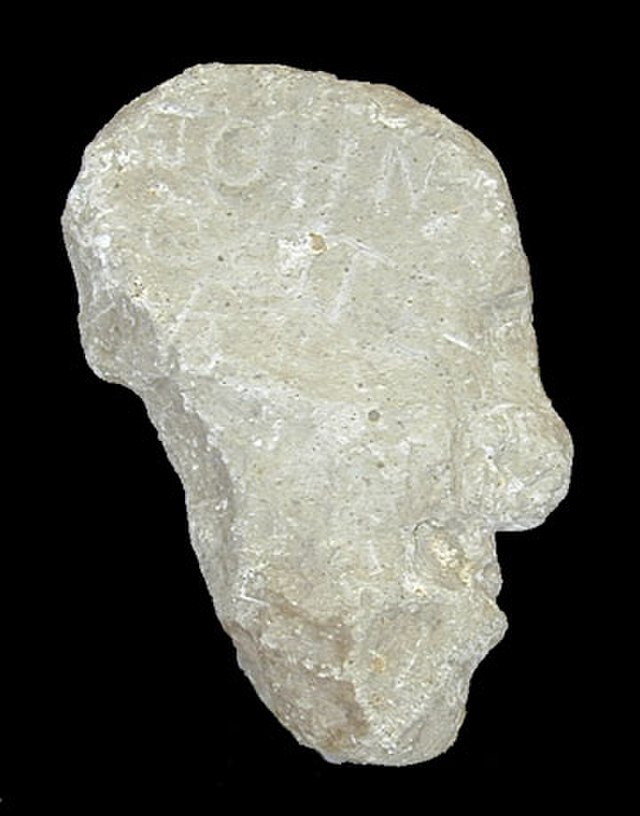 The enigmatic Colter Stone, with the inscription "John Colter", was found in a field in eastern Idaho in 1931.
The enigmatic Colter Stone, with the inscription "John Colter", was found in a field in eastern Idaho in 1931.
-
 "The Three Tetons" as seen from west of the Teton Range by members of the Hayden Geological Survey of 1872. One of the earliest photographs of the Teton Range taken by William Henry Jackson in 1872.
"The Three Tetons" as seen from west of the Teton Range by members of the Hayden Geological Survey of 1872. One of the earliest photographs of the Teton Range taken by William Henry Jackson in 1872.
-
 Grand Teton National Park Dedication in 1929
Grand Teton National Park Dedication in 1929
-
 In this image taken by William O. Owen in 1898, his climbing partners John Shive, Franklin Spalding, and Frank Petersen are depicted on top of Grand Teton.
In this image taken by William O. Owen in 1898, his climbing partners John Shive, Franklin Spalding, and Frank Petersen are depicted on top of Grand Teton.
-
Sunset over the Tetons
-
 Fault-block mountain formation of the Teton Range and Jackson Hole
Fault-block mountain formation of the Teton Range and Jackson Hole
-
 The Teton Fault near the base of Rockchuck Peak creates a nearly horizontal line above the trees in the foreground.
The Teton Fault near the base of Rockchuck Peak creates a nearly horizontal line above the trees in the foreground.
-
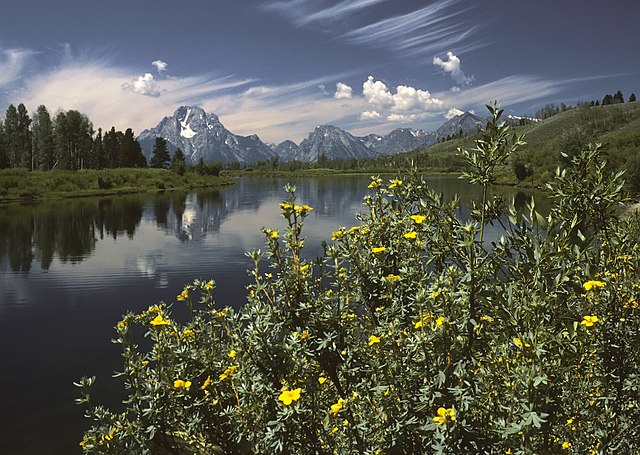 Oxbow Bend on the Snake River
Oxbow Bend on the Snake River
-
 Middle Teton Glacier on the northeast slopes of Middle Teton has numerous crevasses.
Middle Teton Glacier on the northeast slopes of Middle Teton has numerous crevasses.
-
 The geologic feature known as the Black Dike is a diabase intrusion into older gneiss and is visible on the east face of Middle Teton as a dark line bisecting the peak.
The geologic feature known as the Black Dike is a diabase intrusion into older gneiss and is visible on the east face of Middle Teton as a dark line bisecting the peak.
-
 Low larkspur is one of over a hundred flower species found in the park.
Low larkspur is one of over a hundred flower species found in the park.
-
Whitebark pine cones protect seeds that are an important food source.
-
 Snake River fine-spotted cutthroat trout has tiny black spots over most of its body.
Snake River fine-spotted cutthroat trout has tiny black spots over most of its body.
-
 A forest fire near Beaver Creek
A forest fire near Beaver Creek
-
 Mount Moran at 12,605 Ft. Elevation
Mount Moran at 12,605 Ft. Elevation
-
 Hiker crosses snowfield en route to Paintbrush Divide.
Hiker crosses snowfield en route to Paintbrush Divide.
-
 Boats anchored at the Colter Bay Marina
Boats anchored at the Colter Bay Marina
-
 Left to right, Nez Perce, Grand Teton and Mount Owen in the winter
Left to right, Nez Perce, Grand Teton and Mount Owen in the winter
-
 Craig Thomas Discovery & Visitor Center in Moose, Wyoming
Craig Thomas Discovery & Visitor Center in Moose, Wyoming
-
 Signal Mountain Lodge
Signal Mountain Lodge
-
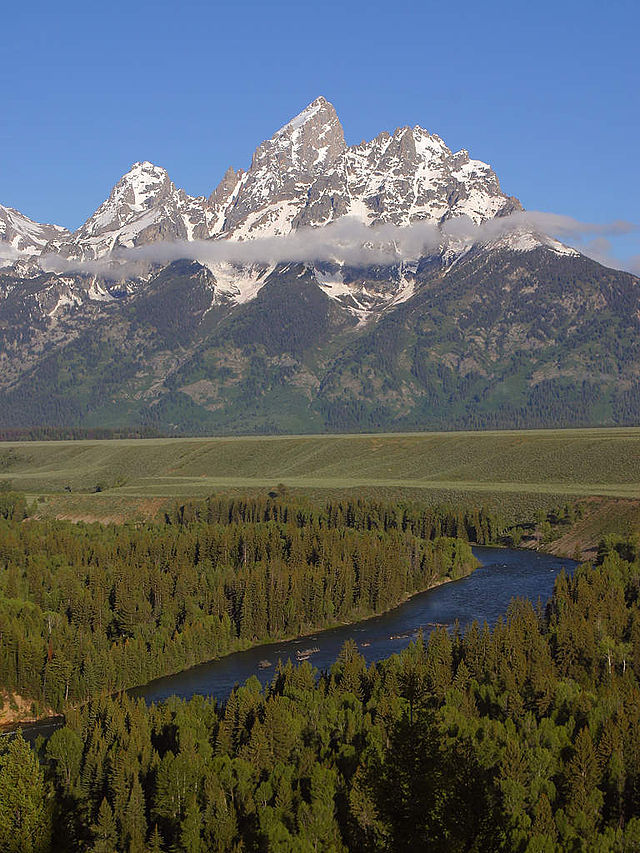
-

-

-

-

-
-

-

-

-

-

-
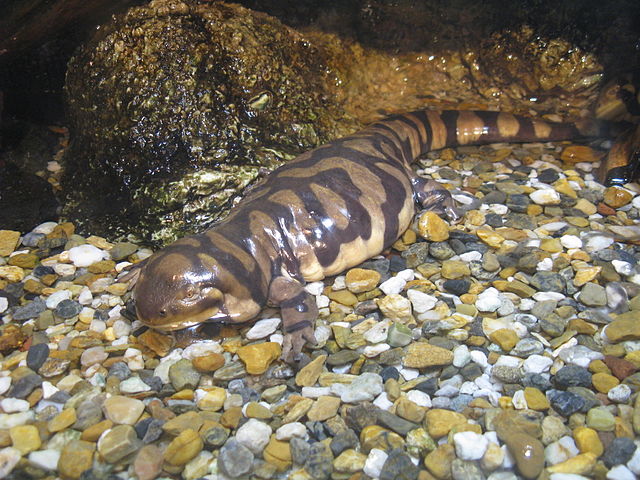
-

-
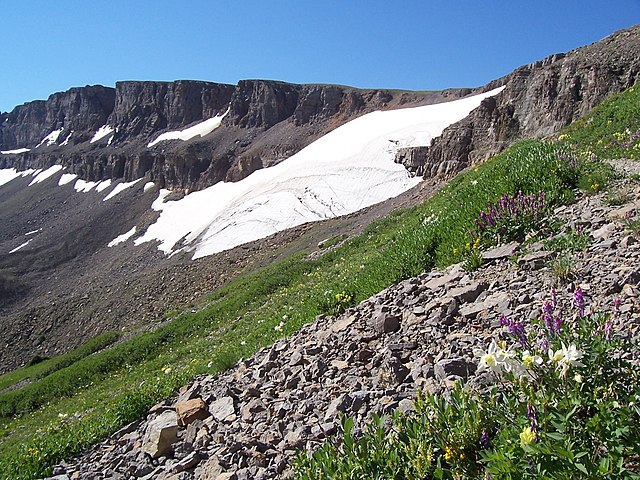
-
-
-

-

-

-

-

-

-

-

-

-

-
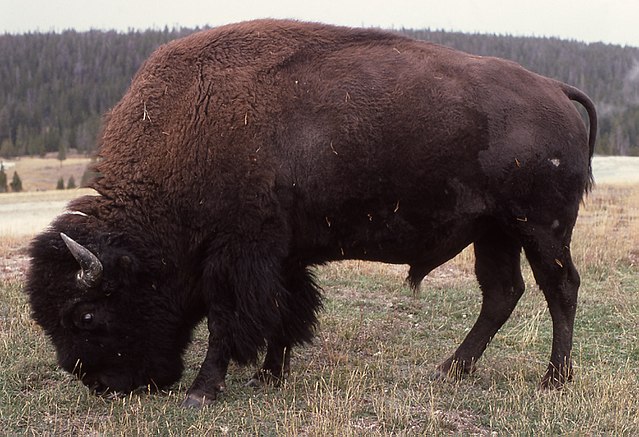
-

-

-

-

-

-

-

-
-

-

-
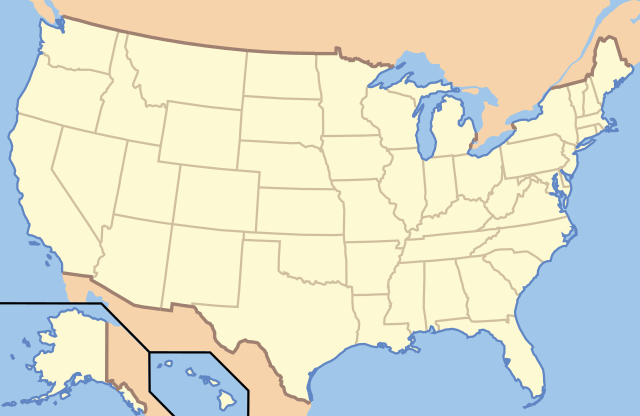
-
-

-

-

-

-

-

-

-

-
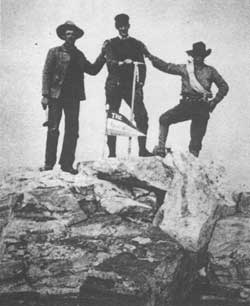
-
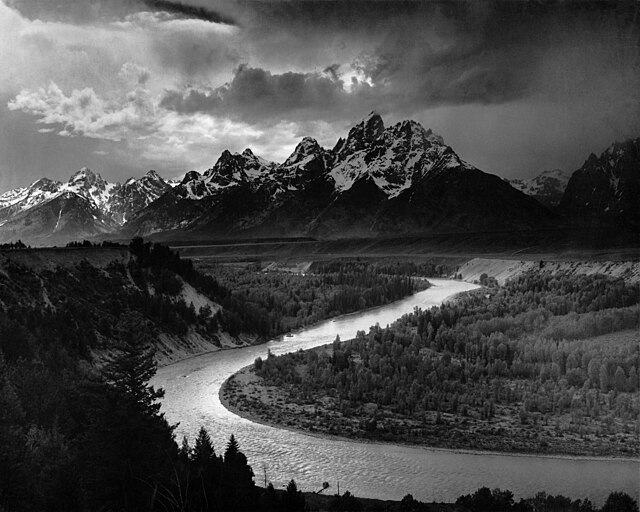
-
-
-

-

-
-
-
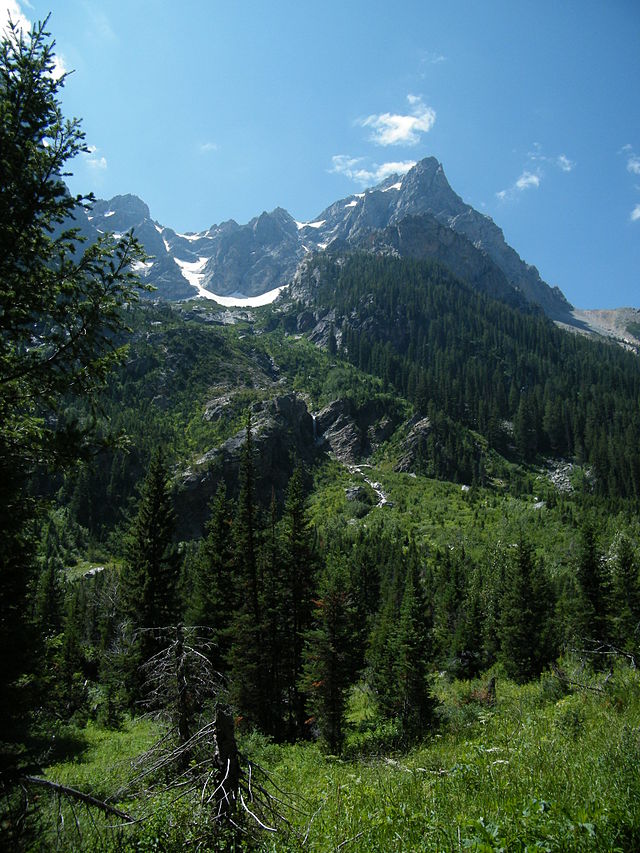
-
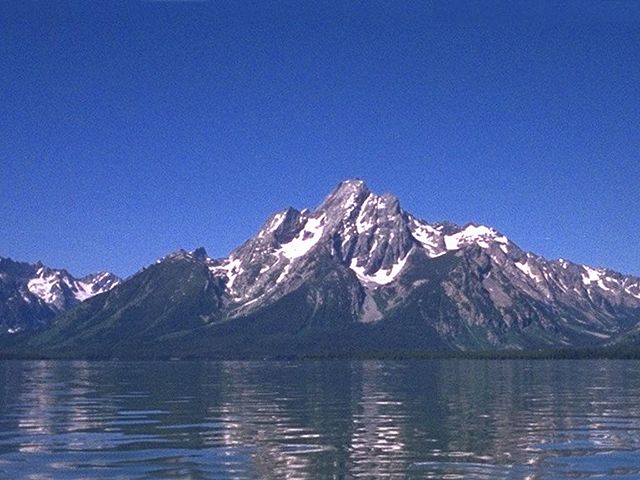
-

-
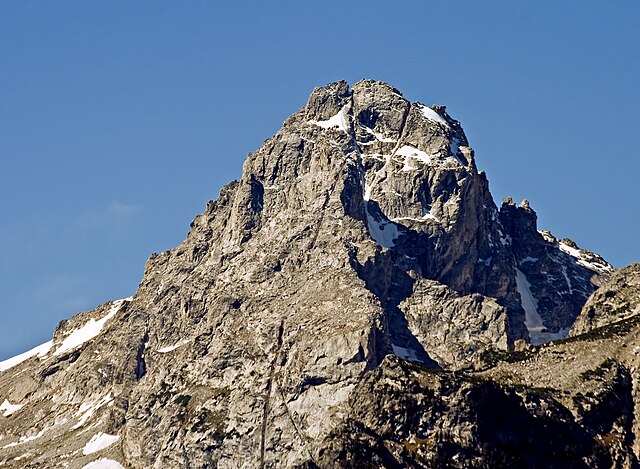
-

-
-
-

-

-

-

-

-
-
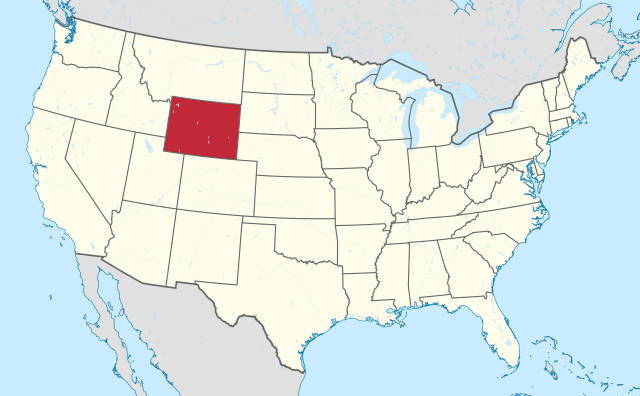
-

-
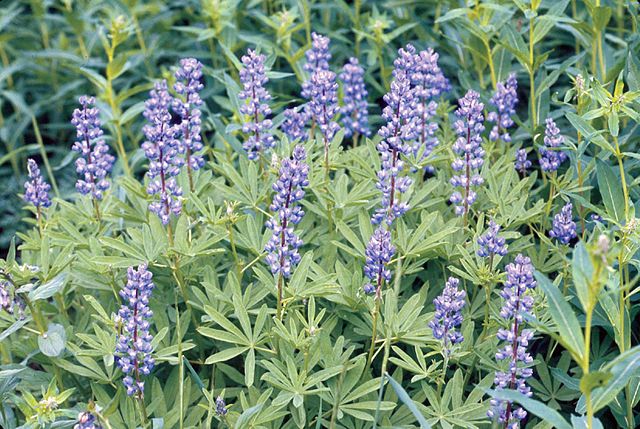
Comments
-
Simply amazing. We spent a day here but could have stayed so much longer. Easy park to tour by car and then park to go on multiple hikes. Don’t forget the Mormon village area for awesome pictures of the whole range.
a week ago -
Every bit as breathtaking as I ever imagined. Also - the wildlife is so flipping real! I've been going to Maine for a decade and have never seen a moose, but after being in the park for less than 30 minutes, I saw my very first real live moose!!!
a week ago -
The alpine lake and vast natural scenic open spaces makes this a great National Park. The park has many good lodges and is not as crowded. Best place to see Moose near Yellowstone area.
3 days ago -
Did self guided tours. Ended at the park. Very beautiful. My wife already wants to return. First time here. Love it! Yes, we did see a couple bears. The hike to the falls isn't too bad, but glad to take the boat back.
a week ago -
It just cannot disappoint!! Even with the smokey weather and a bit of rain during our stay, everything has just been breathtaking. So much to see if you're into stunning landscapes!! You can literally see awe inspiring jagged peaks around every bend, and stunning, active wildlife to watch are sprinkled everywhere.
3 days ago -
1st time ever in this park and it was more than I expected. Jenny Lake and Jackson Lake were beautiful. The campground at Flagg Ranch was nice, but dirt roads and pads made it super dusty. Hope that gets upgrades soon.
5 days ago -
Grand Teton National Park. The name says it. It’s the “Grand Tetons” of the park system. Beautiful at every angle the “Tetons” are a personal favorite. When I set out on seeing as many National Parks as possible this was my first I was awestruck. To say this place is beautiful is an understatement. This place is fantastic in Spirit and in beauty. Nature here is in full bloom especially in Spring which happens here later in the season more like late May early June. Even then it may snow so be prepared as weather conditions here are unpredictable that time of year but the guarantee of warming temperatures brings the most phenomenal bouquet of wildflowers you’ve ever seen. I am in awe of these displays of perfection and natural beauty that are put on by nature. Nature here just pulls out all the stops. There are bison, grizzly bear, pronghorn,elk, moose, rabbits, badgers and yes mountain lions. This is the site of literal purple mountain majesty. The sunrises and sunsets here are supernatural. “Supernatural.” The Tetons themselves are perfection! A trip here is life changing combined with once in a lifetime experiences. © Jerome Mogie Glover All rights reserved
a week ago -
This was my first visit to Grand Teton National Park and it was pretty amazing. We spent three days in the park and hit up all the normal activities. My personal favorite was the Jenny Lake hike. We took the fairy across and then hiked up to Hidden Falls and Inspiration Point. From there we took the western side of the trail back to the car. The views are first class in the park. Having visited Grand Teton and Yellowstone this summer, I would go back to the Tetons for the views (and far fewer people than Yellowstone). Staying in Jackson Hole is expensive. We stayed over the pass in Victor, Idaho. That was a great move. More affordable and far fewer people.
a month ago





































































































